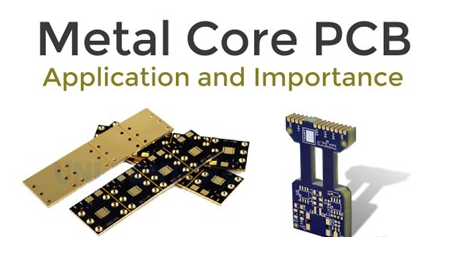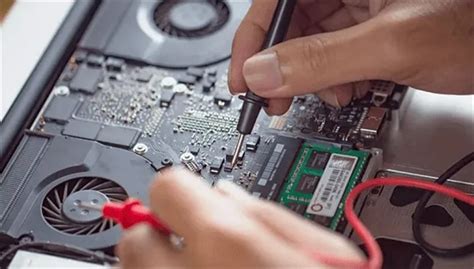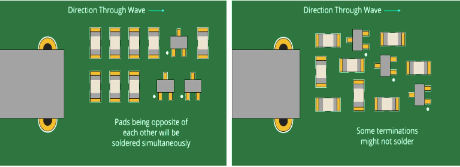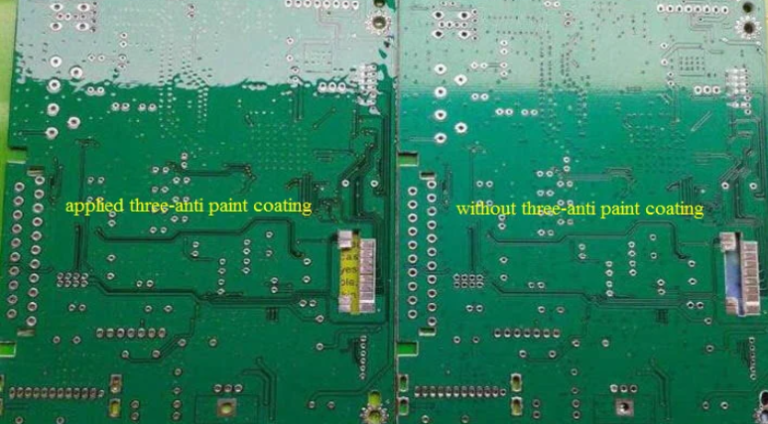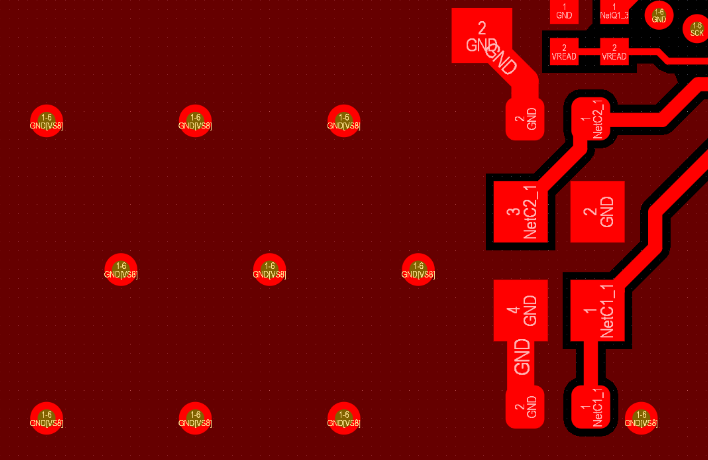Metal core pcb fabrication
Advantages Of Metal Core PCB In Thermal Management
Metal core printed circuit boards (PCBs) have emerged as a pivotal innovation in the realm of electronic design, particularly in applications where thermal management is of paramount importance.
As electronic devices become increasingly compact and powerful, the need for efficient heat dissipation mechanisms has grown correspondingly. Metal core PCBs, with their unique construction, offer a compelling solution to this challenge, providing several advantages that enhance thermal management in electronic systems.
At the heart of metal core PCBs is a metal substrate, typically aluminum or copper, which serves as the foundation for the circuit board.
This metal layer is sandwiched between the dielectric layer and the circuit layer, creating a structure that is inherently more capable of conducting heat away from critical components. The superior thermal conductivity of metals like aluminum and copper allows these PCBs to dissipate heat more effectively than their traditional counterparts, which are usually made from materials like FR-4. This enhanced thermal performance is crucial in preventing overheating, which can lead to component failure and reduced lifespan of electronic devices.
Moreover, the ability of metal core PCBs to manage heat efficiently translates into improved reliability and performance of electronic systems.
By maintaining lower operating temperatures, these PCBs help ensure that components function within their optimal temperature range, thereby reducing the risk of thermal-induced stress and degradation. This is particularly beneficial in high-power applications such as LED lighting, power converters, and automotive electronics, where excessive heat generation is a common concern. In these scenarios, the use of metal core PCBs can significantly enhance the durability and stability of the system.
In addition to their thermal management capabilities, metal core PCBs offer other advantages that contribute to their growing popularity.
For instance, their robust construction provides mechanical stability, making them suitable for use in environments subject to vibration and mechanical stress. This durability is complemented by their ability to support higher current loads, which is essential in applications that demand substantial power delivery. Furthermore, the integration of a metal core can lead to a reduction in the overall size and weight of the PCB, as fewer additional heat dissipation components, such as heat sinks or fans, may be required.
Transitioning from traditional PCBs to metal core variants also opens up new possibilities in design flexibility.
Designers can leverage the thermal properties of metal core PCBs to create more compact and efficient layouts, optimizing the placement of components to further enhance heat dissipation. This flexibility is particularly advantageous in the development of next-generation electronic devices, where space constraints and performance demands are continually increasing.
In conclusion, the advantages of metal core PCBs in thermal management are manifold, making them an indispensable component in modern electronic design. Their ability to efficiently dissipate heat, coupled with their mechanical robustness and design flexibility, positions them as a superior choice for applications where thermal performance is critical. As the demand for high-performance, reliable electronic systems continues to rise, the role of metal core PCBs in ensuring optimal thermal management will undoubtedly become even more significant, driving further innovation and adoption in the industry.

Key Steps In The Metal Core PCB Fabrication Process
Metal core printed circuit boards (PCBs) have become increasingly popular in various industries due to their superior thermal management capabilities. These PCBs are particularly beneficial in applications where heat dissipation is critical, such as in LED lighting, power supplies, and automotive systems. Understanding the key steps in the metal core PCB fabrication process is essential for manufacturers and engineers who aim to leverage these advantages effectively.
The fabrication process begins with the selection of the appropriate metal core material.
Typically, aluminum and copper are the most commonly used metals due to their excellent thermal conductivity and mechanical properties. The choice of metal depends on the specific requirements of the application, including thermal performance, weight considerations, and cost constraints. Once the metal core is selected, it is crucial to ensure that it meets the necessary specifications and quality standards to guarantee optimal performance.
Following the selection of the metal core, the next step involves the preparation of the substrate.
This process includes cleaning the metal surface to remove any impurities or contaminants that could affect the adhesion of subsequent layers. A clean and smooth surface is essential for ensuring the integrity of the PCB and preventing potential defects during the fabrication process. After cleaning, a dielectric layer is applied to the metal core. This layer serves as an insulating barrier between the conductive metal and the circuit traces, preventing electrical shorts and enhancing the overall reliability of the PCB.
Subsequently, the circuit pattern is created on the dielectric layer.
This is typically achieved through a process known as photolithography, where a photosensitive material is applied to the surface, and a mask is used to expose the desired pattern. The exposed areas are then developed, leaving behind the circuit pattern. This step is critical as it defines the electrical pathways that will carry signals and power throughout the PCB. Precision and accuracy are paramount during this stage to ensure that the circuit functions as intended.
Once the circuit pattern is established, the next step involves the etching process.
This process removes the unwanted copper from the board, leaving only the desired circuit traces. The etching process must be carefully controlled to prevent over-etching, which can lead to circuit failures or reduced performance. After etching, the board undergoes a thorough inspection to ensure that the circuit traces are intact and free from defects.
Following the etching process, the PCB is subjected to a series of finishing steps.
These steps may include the application of a solder mask, which protects the circuit traces from oxidation and environmental damage. Additionally, surface finishes such as HASL (Hot Air Solder Leveling), ENIG (Electroless Nickel Immersion Gold), or OSP (Organic Solderability Preservatives) may be applied to enhance solderability and protect the exposed copper surfaces.
Finally, the metal core PCB undergoes a series of tests to verify its functionality and performance.
These tests may include electrical testing, thermal cycling, and mechanical stress testing to ensure that the PCB meets the required specifications and can withstand the demands of its intended application. By following these key steps in the metal core PCB fabrication process, manufacturers can produce high-quality PCBs that offer superior thermal management and reliability, ultimately contributing to the success of various electronic applications.

Comparing Metal Core PCB To Traditional PCB Materials
In the realm of printed circuit board (PCB) technology, the choice of substrate material plays a pivotal role in determining the performance, reliability, and application suitability of the final product. Among the various materials available, metal core PCBs (MCPCBs) have emerged as a compelling alternative to traditional PCB materials, such as FR-4, due to their unique thermal and mechanical properties. Understanding the differences between these materials is crucial for engineers and designers aiming to optimize their electronic designs.
To begin with, one of the most significant distinctions between metal core PCBs and traditional PCBs lies in their thermal conductivity.
MCPCBs typically incorporate a metal core, often aluminum or copper, which serves as a heat sink to efficiently dissipate heat away from critical components. This characteristic is particularly advantageous in high-power applications, such as LED lighting and power electronics, where excessive heat can lead to performance degradation or even failure. In contrast, traditional PCBs, primarily composed of fiberglass-reinforced epoxy resin, exhibit lower thermal conductivity, making them less suitable for applications with stringent thermal management requirements.
Moreover, the mechanical properties of metal core PCBs offer additional benefits over their traditional counterparts.
The metal core provides enhanced structural integrity, reducing the risk of warping or mechanical failure under stress. This robustness is especially beneficial in environments subject to mechanical vibrations or thermal cycling, where traditional PCBs might suffer from fatigue over time. Consequently, MCPCBs are often favored in automotive and aerospace industries, where reliability and durability are paramount.
In addition to thermal and mechanical advantages, metal core PCBs also offer improved electrical performance in certain applications.
The metal core can act as a ground plane, reducing electromagnetic interference (EMI) and enhancing signal integrity. This feature is particularly valuable in high-frequency applications, where maintaining signal fidelity is critical. While traditional PCBs can be designed to mitigate EMI through careful layer stacking and trace routing, the inherent properties of MCPCBs provide a more straightforward solution.
Despite these advantages, it is important to acknowledge the limitations and challenges associated with metal core PCB fabrication.
The presence of a metal core complicates the manufacturing process, often requiring specialized equipment and techniques. For instance, drilling and routing operations must be carefully controlled to prevent damage to the metal core and ensure precise hole alignment. Additionally, the cost of materials and fabrication for MCPCBs is generally higher than that of traditional PCBs, which can be a significant consideration for cost-sensitive projects.
Furthermore, the design flexibility of metal core PCBs is somewhat restricted compared to traditional PCBs.
The metal core limits the number of layers that can be incorporated into the design, typically resulting in single-layer or double-layer configurations. This constraint can pose challenges for complex designs requiring multiple layers for routing and component placement. In contrast, traditional PCBs can accommodate multilayer designs with relative ease, offering greater flexibility for intricate circuit layouts.
In conclusion, while metal core PCBs present distinct advantages in terms of thermal management, mechanical strength, and electrical performance, they also come with certain limitations and challenges. The decision to utilize MCPCBs over traditional PCB materials should be guided by the specific requirements of the application, balancing the benefits of enhanced performance against the potential drawbacks of increased cost and reduced design flexibility. As technology continues to evolve, the ongoing development of fabrication techniques and materials may further expand the applicability and appeal of metal core PCBs in the electronics industry.

Applications Of Metal Core PCB In High-Power Electronics
Metal core printed circuit boards (PCBs) have emerged as a pivotal component in the realm of high-power electronics, offering a unique blend of thermal management and electrical performance. These PCBs are distinguished by their metal core, typically composed of aluminum or copper, which serves as an effective heat sink. This characteristic is particularly advantageous in high-power applications where heat dissipation is critical to maintaining performance and reliability. As electronic devices continue to evolve, the demand for efficient thermal management solutions has become increasingly pronounced, making metal core PCBs an indispensable choice for engineers and designers.
One of the primary applications of metal core PCBs is in the field of LED lighting.
LEDs are known for their energy efficiency and long lifespan, but they also generate significant heat during operation. Excessive heat can degrade the performance and longevity of LED components. Metal core PCBs address this challenge by efficiently dissipating heat away from the LEDs, ensuring optimal performance and extending their operational life. This capability is particularly beneficial in high-power LED applications, such as street lighting, automotive headlights, and industrial lighting systems, where maintaining consistent light output and reliability is paramount.
In addition to LED lighting, metal core PCBs are extensively used in power conversion systems.
These systems, which include power supplies, inverters, and converters, often operate under high power conditions that generate substantial heat. The metal core in these PCBs facilitates effective heat dissipation, thereby enhancing the efficiency and reliability of power conversion devices. This is crucial in applications such as renewable energy systems, where power conversion efficiency directly impacts overall system performance and energy savings.
Furthermore, metal core PCBs find significant application in the automotive industry, particularly in electric vehicles (EVs) and hybrid electric vehicles (HEVs).
The electronic components in these vehicles, such as motor controllers and battery management systems, require robust thermal management to function effectively under high power loads. Metal core PCBs provide the necessary thermal conductivity to manage heat, ensuring the reliability and safety of automotive electronic systems. As the automotive industry continues to shift towards electrification, the role of metal core PCBs in supporting this transition becomes increasingly vital.
Another notable application of metal core PCBs is in telecommunications infrastructure.
With the proliferation of high-speed data transmission and the expansion of 5G networks, telecommunications equipment is required to handle higher power levels and increased thermal loads. Metal core PCBs offer the thermal management capabilities needed to support these demands, ensuring the reliability and performance of critical communication systems. This is particularly important in base stations and data centers, where maintaining optimal operating temperatures is essential to prevent downtime and ensure seamless connectivity.
In conclusion, the applications of metal core PCBs in high-power electronics are diverse and expanding.
Their ability to effectively manage heat makes them an ideal choice for a wide range of industries, from LED lighting and power conversion to automotive and telecommunications. As technology continues to advance and the demand for high-performance electronic systems grows, the importance of metal core PCBs in providing reliable thermal management solutions cannot be overstated. Their role in enhancing the efficiency, reliability, and longevity of high-power electronic applications underscores their significance in the modern technological landscape.

